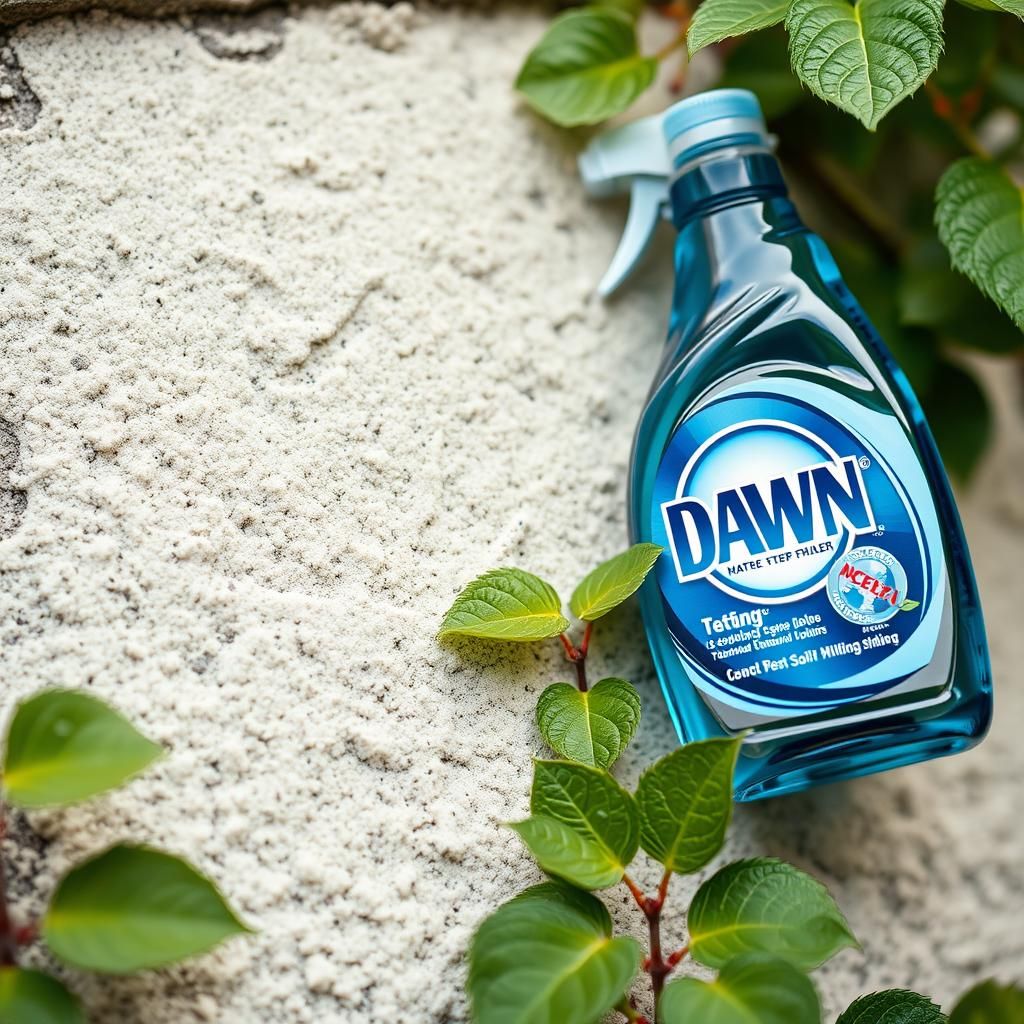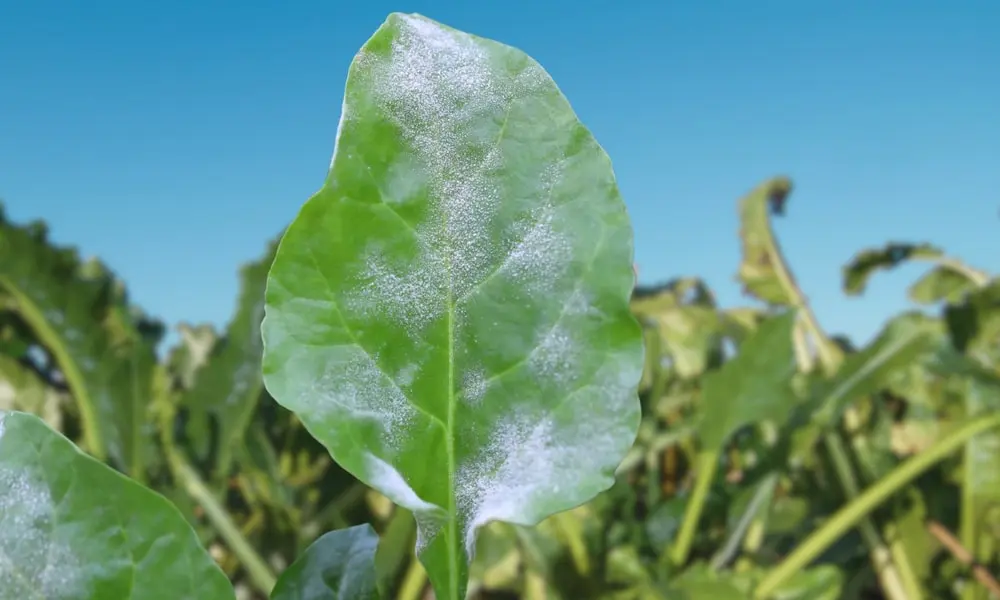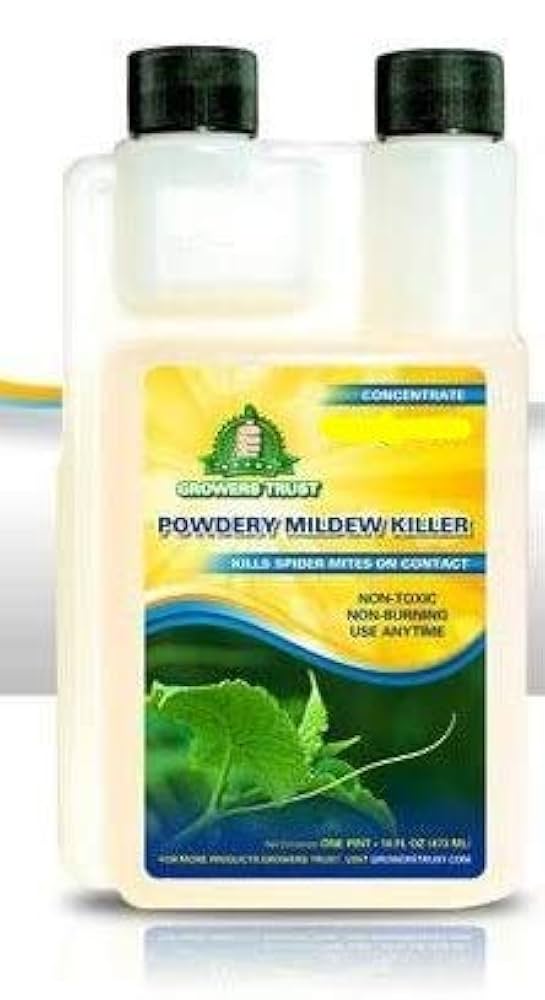Can You Use Dawn to Treat Powdery Mildew? Discover Effective Solutions and Tips

Powdery mildew is a common fungal disease that affects a wide variety of plants, manifesting as a white, powdery coating on leaves and stems. Gardeners often seek effective solutions to combat this persistent issue, and one popular suggestion is using Dawn dish soap. But can this household product truly help in treating powdery mildew? In this article, we will explore the effectiveness of Dawn in managing this pesky fungus, along with practical tips and alternative solutions to maintain healthy plants. Read on to discover whether Dawn is a worthy weapon in your gardening arsenal against powdery mildew.
Can You Use Dawn to Treat Powdery Mildew?
Yes, you can use Dawn dish soap to treat powdery mildew, a common fungal disease that affects a wide range of plants. The active ingredients in Dawn have surfactant properties that can help disrupt the fungus's cell membranes, making it harder for the mildew to thrive. To utilize this method effectively, a mixture of water and a few drops of Dawn soap should be sprayed onto the affected leaves, ensuring good coverage while avoiding the hottest parts of the day to prevent leaf burn. While this method can provide temporary relief and control, it is essential to monitor your plants closely and consider integrating other management practices for long-term effectiveness.
How Does Dawn Affect Powdery Mildew?
Dawn dish soap primarily acts as a surfactant, reducing the surface tension of water, allowing it to penetrate the waxy coating of plant leaves better. This penetration helps to break down the fungal spores and disrupt their ability to reproduce, aiding in the control of powdery mildew. However, because this approach does not kill the fungus outright, repeated applications may be necessary for effective management, particularly in humid conditions where mildew thrives.
Preparation of the Dawn Solution
To create an effective treatment solution for powdery mildew, mix approximately one tablespoon of Dawn dish soap with one quart of water in a spray bottle. Make sure to shake the bottle gently to combine the ingredients thoroughly. This diluted solution can be used to spray directly on the affected leaves, ensuring even coverage on both the top and undersides of the leaves for maximum effectiveness against the mildew.
Application Tips for Best Results
For best results when applying the Dawn solution, it is recommended to spray during the early morning or late afternoon when temperatures are cooler. Avoid applying during the heat of midday, as this can stress the plant and lead to leaf burn. Additionally, ensure that the solution covers the affected areas thoroughly, and consider reapplying after rain or heavy dew, as moisture can wash away the treatment and allow the powdery mildew to return.
Potential Side Effects on Plants
While using Dawn to treat powdery mildew is generally safe, some plants may exhibit sensitivity to soap solutions, leading to leaf burn or other stress responses. It is crucial to perform a test spray on a small, inconspicuous area of the plant before full application to observe any adverse reactions. If the plant shows signs of distress, consider diluting the solution further or using alternative treatments that are more suited to the specific plant species.
Alternative Treatments for Powdery Mildew
Beyond Dawn dish soap, several other treatments can be effective against powdery mildew. Options include baking soda solutions, which can change the pH on leaf surfaces, making it inhospitable to the fungus. Additionally, milk sprays, diluted vinegar, and horticultural oils can offer alternative means of control. Integrating good cultural practices, such as proper plant spacing and ensuring adequate air circulation, can further help prevent the onset and spread of powdery mildew.
| Method | Effectiveness | Notes |
|---|---|---|
| Dawn Dish Soap | Moderate | Good for light infestations |
| Baking Soda Solution | High | Best for prevention and remedies |
| Milk Spray | Moderate | Natural method with mixed results |
| Horticultural Oils | High | Effective, but must be applied carefully |
| Vinegar Solution | Variable | Can cause leaf damage if too strong |
Is baking soda or vinegar better for powdery mildew?

When considering whether baking soda or vinegar is better for treating powdery mildew, it is essential to understand their chemical properties and how they interact with the mildew fungus. Baking soda, or sodium bicarbonate, acts as a fungicide when mixed with water and applied to affected plants. It raises the pH on the leaf surface, creating an environment that is less conducive for the growth of powdery mildew. On the other hand, vinegar, being an acidic solution, can also inhibit the growth of mildew due to its high acetic acid content. However, the effectiveness of both treatments can vary based on the severity of the infection and the plant's susceptibility.
Baking Soda's Mechanism of Action
Baking soda works primarily by increasing the leaf surface pH, which creates an alkaline environment that powdery mildew fungi find inhospitable. The application of a baking soda mixture can effectively reduce existing spores and prevent new infections.
- Works best in early stages of powdery mildew.
- Helps control moisture levels on the plant to deter fungal growth.
- Leaves no harmful residues, making it safe for most plants.
Vinegar's Effectiveness in Treatment
Vinegar contains acetic acid, which can eliminate mildew spores upon contact. The acidity disrupts the cell walls of the fungi, leading to their decay. However, it's important to note that vinegar can also damage tender plant leaves if used in high concentrations.
- Best suited for external and surface fungal infections.
- Action is rapid, potentially killing mildew on contact.
- May harm beneficial plant flora if not diluted properly.
Application Methods for Baking Soda
When using baking soda to combat powdery mildew, a typical approach involves mixing it with water and a small amount of vegetable oil and soap. This combination enhances adherence to the leaf surface.
See also:
- Mix 1 teaspoon of baking soda with 1 liter of water.
- Add a few drops of dish soap to improve spreadability.
- Spray on affected areas every 7-14 days for best results.
Application Strategies for Vinegar
To use vinegar against powdery mildew, it's crucial to dilute it adequately to prevent leaf burn while still achieving an effective mildewcide.
- Mix 1 part vinegar to 3 parts water.
- Test on a small leaf area before widespread application.
- Apply every week to affected plants until symptoms improve.
Comparative Efficacy and Safety
Both baking soda and vinegar can be effective against powdery mildew, but their safety and efficacy depend on application and plant type. Baking soda tends to be less harmful to plants than vinegar, especially for delicate species.
- Baking soda is generally safer for a wider variety of plants.
- Vinegar may offer quicker results but carries a higher risk of damage.
- Consideration of plant type is crucial when choosing an effective treatment.
What is the best killer for powdery mildew?

Powdery mildew is a common fungal disease that affects a variety of plants, causing white, powdery spots on the leaves, stems, and flowers. Finding the most effective killer for powdery mildew is crucial for preventing damage to your plants. Here are several effective methods and treatments that can help manage and eliminate this fungal infection.
1. Chemical Fungicides
Using chemical fungicides is one of the most effective ways to combat powdery mildew. These products are specifically designed to kill fungal spores and prevent their growth.
- Azoxystrobin: A broad-spectrum fungicide that works by inhibiting fungal respiration.
- Myclobutanil: Another effective choice that prevents the spread of the fungus by targeting its cellular functions.
- Bacillus subtilis: A beneficial bacterium that helps suppress fungi, making it a safer option for home gardens.
2. Baking Soda Solution
A baking soda solution is a popular DIY method to manage powdery mildew. This method is non-toxic and can be used as a preventative measure or to treat existing infections.
- Preparation: Mix 1 tablespoon of baking soda with a gallon of water and a few drops of liquid soap.
- Application: Spray this solution directly onto the affected areas of the plant, ensuring thorough coverage.
- Frequency: Repeat every 7-14 days until the mildew is under control.
3. Neem Oil
Neem oil is a natural fungicide derived from the seeds of the neem tree. It can disrupt the life cycle of powdery mildew and other pests, making it an effective treatment option.
- Active Ingredients: Azadirachtin in neem oil hampers the growth and reproduction of the fungal disease.
- Application: Dilute neem oil in water according to label instructions and spray it on the plants, covering both sides of the leaves.
- Safety: Neem oil is safe for humans and pets, making it suitable for organic gardening.
4. Sulfur-based Products
Sulfur has been used for centuries as a fungicide and is still one of the most effective treatments against powdery mildew.
- Forms of Sulfur: Available in dust, liquid, or granule forms, providing flexibility in application.
- Application Timing: Best applied early in the morning or late in the evening to prevent burning the plants.
- Preventative Use: Sulfur can also be used as a preventative measure before any signs of mildew appear.
5. Cultural Practices
Implementing cultural practices can significantly reduce the incidence of powdery mildew on plants. These practices focus on plant care and environmental conditions.
- Spacing Plants: Ensure adequate spacing to promote air circulation, reducing humidity around the plants.
- Watering Techniques: Water plants at the base rather than overhead to keep foliage dry.
- Removal: Regularly remove infected plant parts and debris to decrease fungal spores in the environment.
What is the best method for controlling powdery mildew?
:max_bytes(150000):strip_icc()/powdery-mildew-1402500_FINAL-132e55a8e24b4392a79a41a3791e01b5.png)
The best method for controlling powdery mildew involves a combination of cultural practices, biological control, and chemical treatments. Powdery mildew is a fungal disease that affects a wide range of plants and is characterized by white or grayish powdery spots on leaves, stems, and buds. Effective control requires an integrated approach:
1. Cultural Practices: Preventing the occurrence of powdery mildew starts with proper plant care and management.
See also:
Cultural Practices
Cultural practices are essential for minimizing the risk of powdery mildew infestations. By optimizing the growing conditions, you can create an environment that is less conducive to fungal growth.
- Proper Spacing: Ensure adequate spacing between plants to promote air circulation, which helps reduce humidity.
- Watering Techniques: Water plants at the base rather than overhead to keep leaves dry and discourage fungal development.
- Sunlight Exposure: Position plants in areas with plenty of sunlight as direct sun can inhibit mildew growth.
2. Resistant Varieties: Using plant varieties that are inherently resistant to powdery mildew can significantly reduce susceptibility.
Resistant Varieties
Selecting resistant plant varieties is a proactive approach to combating powdery mildew. Many plants have been bred to withstand this common fungal disease.
- Research Options: Investigate which varieties of your preferred plants are known for their disease resistance.
- Utilize Native Species: Native plants often have better resistance to local pathogens, including powders mildew.
- Contact Local Extension Services: Seek advice from agricultural extension services for recommendations on resistant varieties suitable for your region.
3. Biological Control: Employing biological control agents can help keep powdery mildew in check.
Biological Control
The use of biological control involves introducing natural predators or antagonists that target the powdery mildew fungus. This eco-friendly method can be effective without the use of chemical fungicides.
- Beneficial Microorganisms: Use products containing beneficial fungi like Trichoderma which can outcompete the mildew pathogens.
- Plant Companions: Interplant with marigolds or other plants known to repel or hinder fungal growth.
- Regular Monitoring: Keep an eye on your plants to identify any early signs of fungal growth, allowing you to intervene promptly.
4. Chemical Treatments: When necessary, fungicides can provide an effective solution for managing powdery mildew outbreaks.
Chemical Treatments
When cultural and biological methods are insufficient, chemical treatments can play a crucial role. Several fungicides are available specifically for managing powdery mildew.
- Fungicides: Look for fungicides labeled for powdery mildew control, such as sulfur or potassium bicarbonate.
- Application Timing: Apply fungicides early in the season, ideally before symptoms appear, for the best results.
- Follow Label Directions: Always read and follow the manufacturer's instructions for application rates and safety precautions.
5. Environmental Management: Adjusting the environment in which plants are grown can help minimize the incidence of powdery mildew.
Environmental Management
Managing the environmental conditions is key to preventing powdery mildew. High humidity and low light are factors that promote fungal growth.
- Humidity Control: Use dehumidifiers in greenhouses or covered environments to lower humidity levels.
- Air Circulation: Increase airflow using fans in closed environments to reduce humidity around plants.
- Temperature Regulation: Maintain optimal temperatures for plant growth, generally between 60°F to 75°F, to discourage mildew development.
Questions from Our Readers
Can Dawn dish soap effectively eliminate powdery mildew?
Dawn dish soap can help control powdery mildew due to its ability to break down the protective barriers of the fungus. However, while it may reduce the symptoms, it is not a complete solution for eliminating the disease. Regular treatments and combining it with other treatments might be necessary for effective control.
How should you mix Dawn for treating powdery mildew?
To use Dawn dish soap for treating powdery mildew, mix approximately 1 to 2 tablespoons of the soap with a gallon of water. This diluted solution can be sprayed directly onto affected plants, ensuring coverage on both the tops and undersides of the leaves where the mildew often thrives.
Is Dawn safe for all plants when treating powdery mildew?
While Dawn dish soap is generally safe for many plants, it is always best to conduct a patch test on a small area before widespread application. Some sensitive plants may react adversely, so monitoring their response is crucial to ensure that they do not suffer damage.
See also:
How often should you apply Dawn soap to control powdery mildew?
For effective control of powdery mildew using Dawn dish soap, it is recommended to apply the solution once a week. Consistency is key, and additional applications may be necessary after rain or heavy watering, as these conditions can wash away the treatment.

If you want to read more articles like Can You Use Dawn to Treat Powdery Mildew? Discover Effective Solutions and Tips, we recommend you check out our Plants category.
Leave a Reply
Related Articles